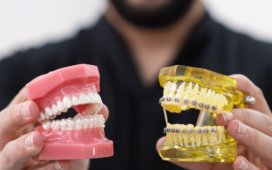Dental plaque, a sticky film of bacteria that forms on teeth, is a common dental issue that can lead to tooth decay and gum disease if not properly managed. The formation of plaque is a natural process, but its control is essential for maintaining oral health. Below are some practical tips to effectively manage dental plaque and ensure a healthy mouth.
- Understanding Dental Plaque: Dental plaque is primarily composed of bacteria and is formed when these bacteria interact with sugars and starches in the food we eat. This interaction produces acids that can damage tooth enamel and lead to cavities. If plaque is not removed, it can harden into tartar, which is more difficult to remove and can cause gum inflammation, or gingivitis.
- The Importance of Flossing: Flossing daily is crucial in removing plaque and food particles from areas where a toothbrush cannot reach, particularly between the teeth. The ADA advises using an 18-inch piece of floss, winding most around one middle finger and the rest around the opposite hand’s middle finger. Gently guide the floss between teeth using a rubbing motion, curving it into a ‘C’ shape against one tooth and sliding it into the space between the gum and the tooth.
- Regular Dental Checkups: Regular visits to the dentist, ideally every six months, are essential for plaque control. Professional cleanings remove tartar buildup, and dentists can spot early signs of gum disease and cavities. These appointments also provide an opportunity to discuss any concerns and receive personalized advice for improving dental hygiene practices.
- Dietary Choices: What you eat plays a significant role in plaque formation. To minimize plaque, limit sugary and starchy foods and beverages, as these are the preferred energy sources for plaque-forming bacteria. Instead, opt for a balanced diet rich in fruits, vegetables, whole grains, and lean proteins. Additionally, drinking water throughout the day helps wash away food particles and bacteria.
- Mouthwash as an Adjunct: Incorporating an antibacterial mouthwash into your oral hygiene routine can help control plaque and prevent gingivitis. Mouthwashes with fluoride can also help strengthen tooth enamel. However, mouthwash should not replace brushing and flossing but rather be used as an additional tool.
- Quitting Smoking: Smoking is detrimental to oral health and can contribute to plaque buildup and gum disease. Quitting smoking can significantly improve oral health and reduce the risk of developing gum disease and other dental issues.
- Chewing Sugar-Free Gum: Chewing sugar-free gum, especially after meals, can increase saliva flow, which helps neutralize and wash away acids produced by bacteria in plaque. Look for gum with the ADA Seal of Acceptance, which indicates it has been scientifically evaluated for safety and efficacy.
- Use of Interdental Brushes: For those who find flossing challenging or have wider gaps between their teeth, interdental brushes can be a great alternative. These small brushes are designed to clean between teeth and can effectively remove plaque from areas a regular toothbrush can’t reach.
- Sealants: Dental sealants are a protective coating applied to the chewing surfaces of the back teeth. They can prevent food and plaque from getting stuck in the grooves of the teeth, significantly reducing the risk of cavities.
- Fluoride Treatments: In-office fluoride treatments provided by dentists can strengthen the enamel, making it more resistant to the acid produced by plaque bacteria. This can be especially beneficial for those at high risk of tooth decay.
- Limit Snacking: Frequent snacking, especially on sugary or acidic foods, can give plaque bacteria more opportunities to produce harmful acids. Try to limit snacking and, if you do snack, choose healthier options like cheese, nuts, or vegetables.
Managing dental plaque and bad breath is crucial for maintaining good oral health. By adopting effective brushing and flossing techniques, making informed dietary choices, visiting the dentist regularly, and considering adjuncts like mouthwash and sugar-free gum, individuals can significantly reduce their risk of plaque-related dental issues. Remember, the key to managing dental plaque lies in consistency and commitment to a comprehensive oral hygiene routine.



















